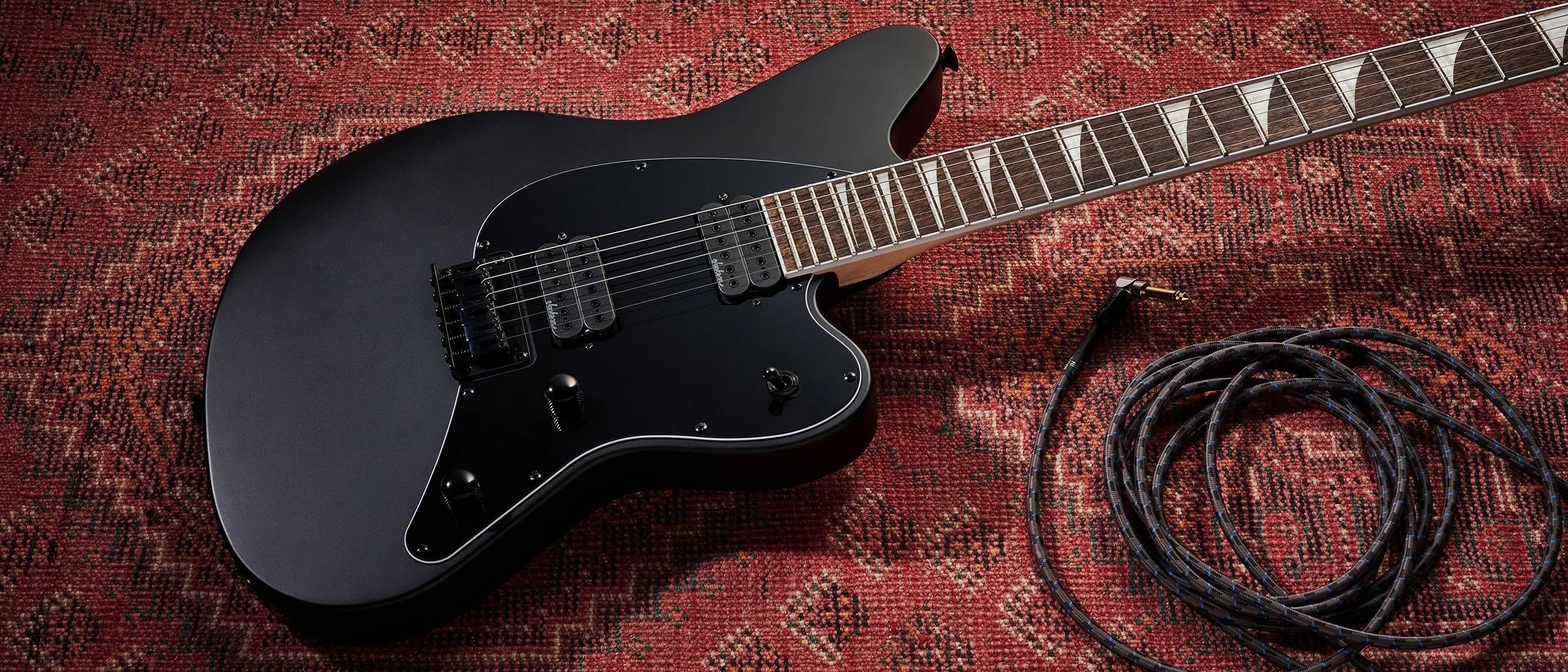How to Swing Guitar Scales Like a Horn Player
Try out a picking exercise that mimics the way horn players tongue their notes in the jazz style.

When learning how to play jazz guitar, one of the hardest things to do is take all of the scales you’ve been practicing and make them swing and sound more like music and less like exercises.
In this lesson, we’ll look at a picking exercise that mimics the way horn players tongue their notes in the jazz style.
By picking the up beats of each bar and slurring onto the down beats, you will be able to transform your scales from exercises into cool-sounding jazz lines in no time.
While the premise is fairly straight forward — you pick on up beats and slur onto down beats — you will need to alter any traditional scale fingerings you know in order to accomplish this, as having three notes on one string doesn’t allow you to pull off this technique.
I have written a few examples for you to check out, and then you can take this approach to other scales and modes you know or are working out in the practice room, adjusting the fingerings in the same way so that you have two or four notes on each string as is the case below.
Swing Scales Ascending
To begin, here is how you would apply the swing slurs to an ascending C major scale. Notice how you are picking on the up beats, after the first note, and then slurring onto the down beats as you run up the scale.
You can use hammer-ons and slides with this approach, so you should try both; this will allow you to choose between them in the moment.
Go slow at first and use a metronome. Although slurs in this style help you build your swing feel, they will also cause you to rush a bit if you are new to this sort of syncopated picking attack.
Once you have this scale down, ascending at a slow tempo, move on to the next example, which explores the descending version of the swing scale approach.

Swing Scales Descending
The descending version of this exercise mimics the ascending version, only now you are picking on the up beats and adding pull-offs or slides on the down beats as you play down the scale.
Here's an example of a D Dorian scale with this approach. Start with this example, then when you’re comfortable, try taking this idea to other keys and scales, as well as combining the ascending and descending versions of one scale together.

Swing Scales Exercises
Now that you have a few examples of the swing scales under your fingers, here are five exercises you can do in order to take this approach further in the woodshed.
01.Pick a scale and key, run up and down this scale/key using the slurred, swing approach to the ascending and descending versions of the scale. Adjust fingerings as needed.
02.Put on a slow ii V I backing track and improvise lines over that key using the slurred, swing scale approach to your phrases. If you get stuck, stop and work out the fingering and start again.
03.Work the above two exercises using hammer-ons and pull-offs only, then repeat the exercise using only slides for each slur and note the difference each variation makes to your scales.
04.Solo over a jazz blues progression and apply the swing scale approach to each of your lines. Again, if you get stuck on a fingering, stop and work it out before trying again over the same backing track.
05.Write 5 ii V I lines, major and/or minor, using the swing scale approach in each line. Work these lines in 12 keys and then take them into your improvisation practice as well.
As you can see, it’s a small idea, slurring from the off beats to the on beats, but it can take your playing to new levels, and get your scale lines swinging like your favorite horn players in no time.
Do you have a question or comment about swinging scale in this manner? Share your thoughts in the comments section below.
Matt Warnock is the owner of mattwarnockguitar.com, a free website that provides hundreds of lessons and resources designed to help guitarists of all experience levels meet their practice and performance goals. Matt lives in the UK, where he is a lecturer in Popular Music Performance at the University of Chester and an examiner for the London College of Music (Registry of Guitar Tutors).
Get The Pick Newsletter
All the latest guitar news, interviews, lessons, reviews, deals and more, direct to your inbox!
Matt Warnock is the owner of mattwarnockguitar.com, a free website that provides hundreds of lessons and resources designed to help guitarists of all experience levels meet their practice and performance goals. Matt lives in the UK, where he teaches Skype guitar students all over the world, and is an examiner for the London College of Music (Registry of Guitar Tutors).
“He combined the passion of Gary Moore with riffs inspired by Zeppelin and Deep Purple, plus unexpected melodic twists like Ritchie Blackmore”: He was one of ’80s rock’s great journeymen – and his searing hot lead work inspired Marty Friedman
How to get better at guitar – 10 proven ways to improve your playing fast










